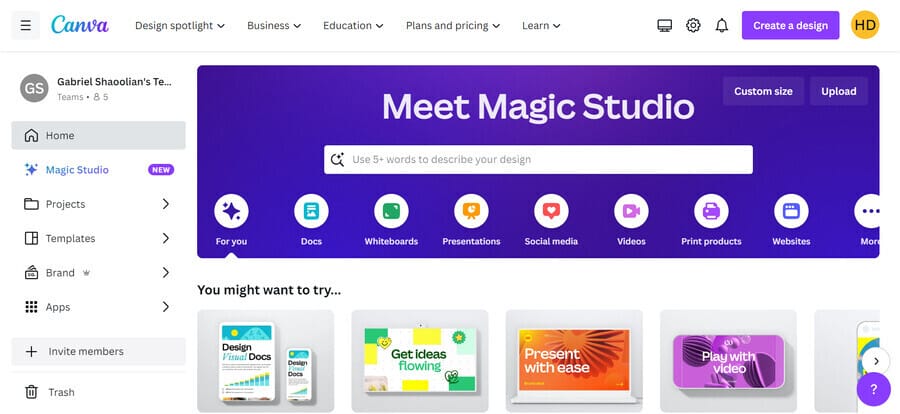Creating a Mobile-Optimized Website with Expert Web Design Techniques
Creating a Mobile-Optimized Website with Expert Web Design Techniques
Blog Article
Recognizing Individual Experience: Trick Concepts for Effective Website Design
In the realm of web design, comprehending individual experience (UX) is paramount to creating systems that not only draw in however likewise maintain customers. Trick concepts such as instinctive navigating and reliable feedback devices play important functions in promoting individual satisfaction. Additionally, factors to consider for access make sure that all individuals can involve with the material perfectly.
Significance of Individual Experience

In the world of web design, one can not undervalue the importance of customer experience (UX) as a critical aspect that straight affects the success of a web site. When individuals come across a user-friendly and appealing user interface, they are much more most likely to explore the web content, convert right into customers, or share their experiences with others.
It incorporates the total performance of a web site, making certain that navigating is smooth and info is easily obtainable. Web sites that focus on UX are often perceived as more trustworthy and trustworthy, which can have an extensive influence on conversion prices.
Inevitably, spending in customer experience is not simply a layout selection; it is a strategic decision that can differentiate a brand in a crowded marketplace. By concentrating on UX, businesses can create meaningful interactions that resonate with users, leading the way for continual success in the digital landscape.
Functionality Principles
Effective web design depends upon the application of vital use principles that guarantee a site is both straightforward and useful. Central to these concepts is the concept of intuitiveness, where customers can browse the site easily without substantial direction. Clear navigation structures, consisting of regular designs and well-labeled menus, boost this instinctive experience, permitting individuals to locate details quickly.

Consistency is equally vital; maintaining harmony in design aspects, terminology, and treatments throughout the site helps to minimize complication. Customers should not need to relearn exactly how to communicate with various sections of the site.
Additionally, mistake prevention and recovery are essential for use. Web sites ought to be designed to lessen the opportunity of individual errors, and when mistakes take place, clear and useful mistake messages must direct customers towards resolution.
Access Factors To Consider
Ensuring access in web layout is critical for developing inclusive electronic experiences that accommodate all customers, including those with handicaps. Ease of access factors to consider involve creating websites that fit varied requirements, enabling individuals with aesthetic, auditory, cognitive, or electric motor problems to navigate and engage effectively.
To accomplish this, internet designers must comply with established standards, such as the Internet Content Availability Standards (WCAG) These guidelines supply a structure for making material perceivable, operable, understandable, and robust. Trick techniques include guaranteeing enough shade contrast, offering text options for non-text content, and ensuring key-board navigability.
Additionally, semantic HTML ought to be used to improve display viewers compatibility, permitting users with aesthetic problems to comprehend the structure and meaning of content without effort. web design. Offering clear, concise directions and utilizing simple language can better improve use for people with cognitive disabilities
Regular ease of access testing, involving real users with impairments, is vital to determine barriers and enhance the user experience. By prioritizing accessibility, internet developers not just adhere to lawful criteria yet additionally promote a more equitable electronic landscape, eventually benefiting everyone through enhanced functionality and engagement.
Visual Design Elements
A myriad of visual design components plays a crucial duty in forming customer perceptions and experiences on a web site. These aspects include color design, typography, imagery, whitespace, and design, each adding to the overall visual allure and efficiency of a website.

Shade plans evoke feelings and can influence user activities; for circumstances, warm shades might create a feeling of seriousness, while amazing colors frequently promote peace. Typography, on the other hand, influences readability and can develop a brand's individuality - web design. The option of font design and size must straighten with the site's purposes and target market
Images, including images and icons, boosts storytelling and can significantly affect user involvement. Premium visuals produce a feeling of YOURURL.com professionalism and trust, while poor-quality images might interfere with the individual experience.
Layout and whitespace are similarly important, as they assist customers with the web content. A well-structured layout helps customers find info quickly, while appropriate whitespace prevents clutter, promoting a more satisfying surfing experience.

Checking and Iteration
Customer testing and version are essential parts of a successful website design procedure. These techniques make it possible for designers to gather important comments from real customers, making certain that the end product meets their expectations and requirements. Customer testing entails observing just how real customers interact with a web site, identifying functionality concerns, and understanding individual actions. This direct comments is crucial in exposing discomfort points that may not appear throughout the design stage.
Version, on the other hand, is the procedure of improving the style based upon the understandings obtained from user testing. By making incremental changes and re-evaluating the style, teams can improve performance, enhance visual appeals, and enhance individual interaction. This intermittent method promotes a culture of constant enhancement, enabling designers to adapt to user needs and emerging trends efficiently.
Furthermore, integrating both user testing and model right into the layout procedure causes more educated decision-making and ultimately results in a more user-centered item. By welcoming these concepts, web designers can create more instinctive, appealing, and reliable experiences that resonate with their target market, inevitably driving greater customer fulfillment and retention.
Final Thought
Finally, user experience is a critical element of effective website design, including use, access, and aesthetic factors to consider. Sticking to established principles improves user fulfillment and involvement, promoting an extra comprehensive on the internet environment. Constant testing and model function as vital procedures for attending to and identifying individual pain factors, ensuring that internet styles continue to be adaptable to evolving requirements. By focusing on these aspects, internet developers can develop interfaces that not just meet customer expectations however also promote long-term connections.
In the realm of web layout, recognizing individual experience (UX) is vital to producing platforms that not only draw in but also preserve customers.In the realm of web design, one can not ignore the relevance of customer experience (UX) as top article a crucial component that straight affects the success of a website. User screening includes observing exactly how real individuals communicate with a web site, determining functionality problems, and comprehending individual habits.In final thought, user experience is an important element of efficient web design, incorporating use, access, and visual factors to consider. Constant testing and iteration serve as essential procedures for view it determining and attending to user discomfort factors, making sure that web designs continue to be versatile to developing needs.
Report this page